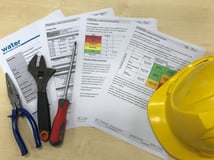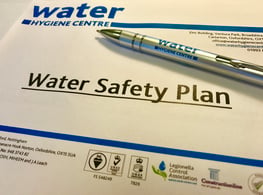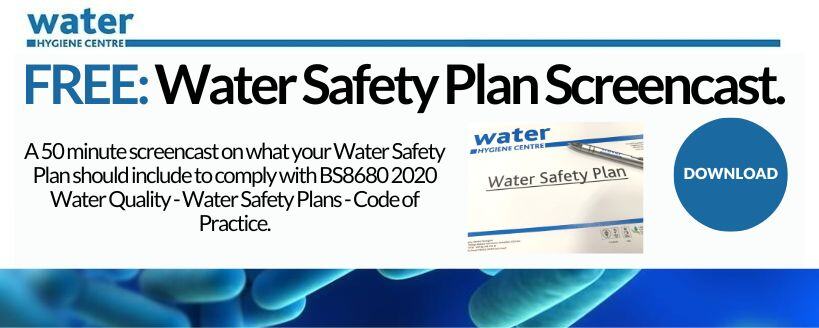Access to safe and clean water is a fundamental human right and a crucial aspect of public health. To ensure the provision of safe water, the World Health Organization (WHO) developed comprehensive guidelines known as Water Safety Plans (WSPs).
Following this, the British Standard BS8680:2020 Water Quality and Water Safety Plans came into being and these plans provide a framework for maintaining and managing water safety in domestic water systems.
In this blog, we will explore the essential components outlined in BS8680 that align with the guidance given by the WHO for Water Safety Plans for the delivery of safe and potable water.
Water System Description:
A thorough understanding of the water system is essential for developing an effective Water Safety Plan. Describe the entire water system, including the source, treatment processes, distribution network, and end-users. Identify potential hazards and assess the risks associated with each stage of the system to develop appropriate control measures.
Hazard Identification and Legionella Risk Assessment:
 Conduct a comprehensive Legionella risk assessment to identify potential hazards that may compromise water safety. This includes physical, chemical, radiological and microbiological hazards. Evaluate the likelihood and severity of each hazard, considering factors such as contamination sources, system vulnerabilities, and potential consequences. This analysis will help prioritize control measures.
Conduct a comprehensive Legionella risk assessment to identify potential hazards that may compromise water safety. This includes physical, chemical, radiological and microbiological hazards. Evaluate the likelihood and severity of each hazard, considering factors such as contamination sources, system vulnerabilities, and potential consequences. This analysis will help prioritize control measures.
Control Measures:
Implement robust control measures to minimise or eliminate identified hazards. These measures may include source protection, appropriate treatment processes, regular maintenance of infrastructure, and routine monitoring of water quality parameters. Develop standard operating procedures for each control measure and ensure they are implemented and monitored effectively.
Monitoring and Surveillance:
 Regular monitoring and surveillance of the water system are vital to detect any deviations from the desired water quality. Establish a monitoring program that includes Legionella sampling and testing at various points in the system. Monitor key parameters as appropriate, such as disinfection levels, turbidity, pH, and microbiological indicators. Implement procedures to respond promptly to any abnormal results.
Regular monitoring and surveillance of the water system are vital to detect any deviations from the desired water quality. Establish a monitoring program that includes Legionella sampling and testing at various points in the system. Monitor key parameters as appropriate, such as disinfection levels, turbidity, pH, and microbiological indicators. Implement procedures to respond promptly to any abnormal results.
Management and Communication:
Establish a clear management structure for the Water Safety Plan, assigning appropriate responsibilities to individuals or teams. Ensure that Legionella training is provided to relevant personnel in water safety procedures and maintain up-to-date records of training activities. Develop effective communication strategies to inform and educate stakeholders about water safety measures, including staff, consumers, and regulatory bodies.
Emergency Preparedness and Response:
Water systems are susceptible to emergencies such as chemical spills, natural disasters, or infrastructure failures. Develop a comprehensive emergency plan that outlines procedures for responding to emergencies, including contingency measures, communication protocols, and alternative supply options. Conduct regular drills and exercises to test the effectiveness of the emergency plan.
Documentation and Review:
Maintain detailed documentation of the Water Safety Plan, and update the plan to incorporate new findings, changes in regulations, and emerging risks. Ensure that the plan is accessible to all relevant personnel and is readily available for external audits or inspections.
Conclusion:
 Adopting a Water Safety Plan in line with WHO guidelines and BS8680 is crucial for ensuring the provision of safe and clean water to consumers.
Adopting a Water Safety Plan in line with WHO guidelines and BS8680 is crucial for ensuring the provision of safe and clean water to consumers.
By systematically assessing risks, implementing control measures, monitoring water quality, and maintaining effective communication and emergency response procedures, water providers can safeguard the health and well-being of their communities. A comprehensive and well-documented Water Safety Plan is the cornerstone of responsible water management, enabling continuous improvement and a resilient water supply system.
Feel free to reach out if you have any questions about this blog or if you would like to consult with one of our experts for further advice on water hygiene.
Editors Note: The information provided in this blog is correct at the date of original publication – September 2023
© Water Hygiene Centre 2023









